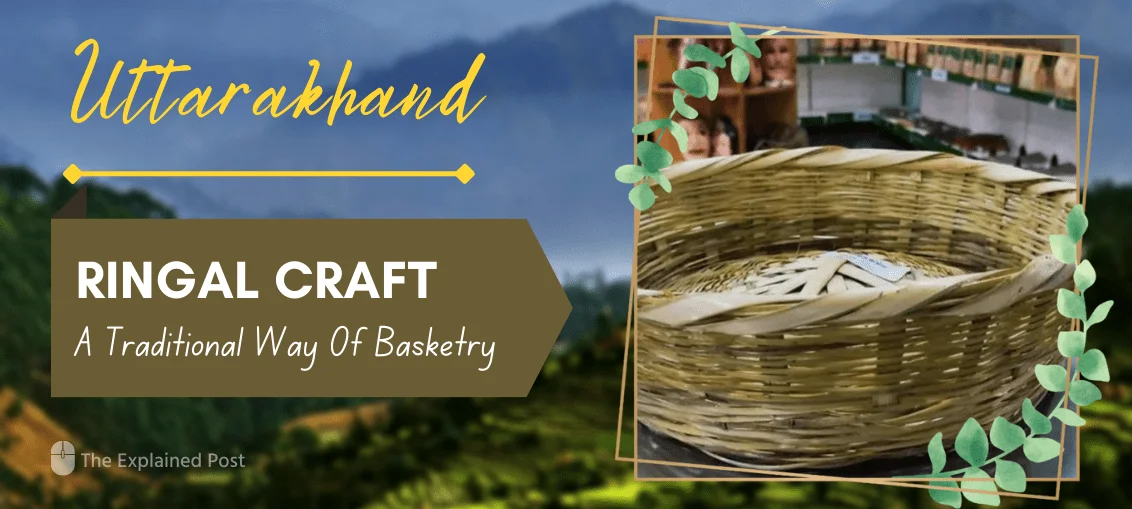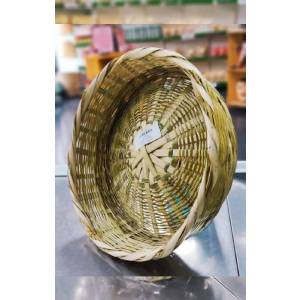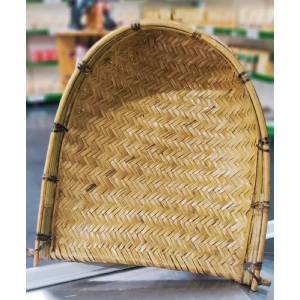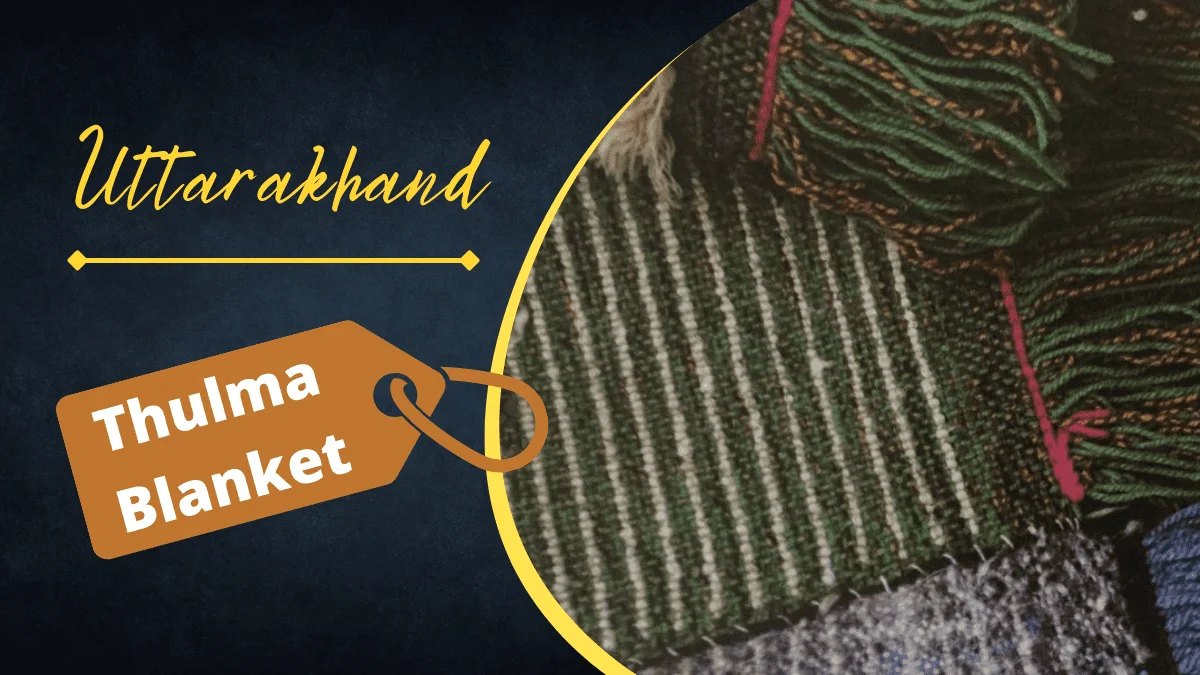Recently, the Geographical Indication Registry under the Ministry of Commerce and Industry approved a GI tag to Ringal craft and six other indigenous products of Uttarakhand. Also known as “ningaw” in traditional language, Ringal is a dwarf bamboo, sturdy and flexible. It is used to make basketry in Kumaun and Garhwal regions in Uttarakhand.
Ringal weaving is a traditional craft and is socioeconomically important in Uttarakhand. The craft is one of the traditional ways of livelihood in rural areas that constitute around 80% of the region in the state. The Ringal products are environmentally friendly and are made to serve multiple purposes.
The flexibility of the Ringal allows it to be folded and shaped in various ways. As a result, a range of products can be created using the Ringal. It can be used to create storage boxes, baskets, soulta (a basket used to carry grass and firewood).
The Ringal products become artistically beautiful when some decorative elements are added to their making. It is a way to attain financial independence for several villagers especially women who are involved actively in this craft.
Types of Ringaal used for Handicrafts
Generally, there are 5 types of Ringal available and used to make Handicrafts by weavers (rudiyas).
1- Drepanostachyum Falcatum –
| Scientific Name | Local Name | Hindi Name |
| Drepanostachyum Falcatum (Nees) Keng f. | Golu or Garh or Garila ringal | गढ़ या गडेलू रिंगाल |
Himalayan Weeping Bamboo is called Drepanostachyum Falcatum in the world of plants. It is a beautiful soft dandy bamboo with drooping leaves. It has thick, drooping branches, bright green stems, and small, thin leaves that look like paper. At the ligule, the leaf blades fall off. They are lance-shaped, 7.5–10 cm long, and 5–8 mm wide.
Drepanostachyum Falcatum (Golu or Garh or Garila ringal), on the other hand, is easy to find, but the weavers don’t use it because the bark is rough and it doesn’t last long.
2- Thamnocalamus Spathiflorus –
| Scientific Name | Local Name | Hindi Name |
| Thamnocalamus Spathiflorus | Dev Ringal | देव रिंगाल |
Thamnocalamus spathiflorus is an evergreen bamboo that grows in clumps and can reach heights of 3 to 4 meters, and sometimes 5.5 meters. It has straight, woody culms that are 10 to 20 mm in diameter and thin-walled internodes that are 15 to 18 cm long.
Thamnocalamus Spathiflorus (Dev ringal) is used to make puja thalis, roofs and coverings for their grass houses, hookah pipes, and walking sticks because it is flexible, has a natural yellowish color, and stands up straight.
3- T. jonsarensis –
| Scientific Name | Local Name | Hindi Name |
| T. jonsarensis | Tham Ringal | थाम रिंगाल ( सबसे मजबूत और मोटा रिंगाल ) |
A vigorous, spreading bamboo that can grow to be 3-3.5m tall or more. It has very straight, glossy, dark green canes and drooping branches with leaves that are up to 15cm long and shaped like narrow lances.
4 – Arundinaria falcata –
| Scientific Name | Local Name | Hindi Name |
| Arundinaria falcata | Sararu Ringal | सरडू रिंगाल |
Sinarundinaria falcata Chao & Renvoize (Ringal) is a useful species of hill bamboo that has many uses in the Garhwal Himalayas of Uttarakhand. It is an economically important species.
5- Bhatputra –
Bhatputra is known by locals and has been found in the district of Rudraprayag. Bhatpura is used to make crafts and items for farming.

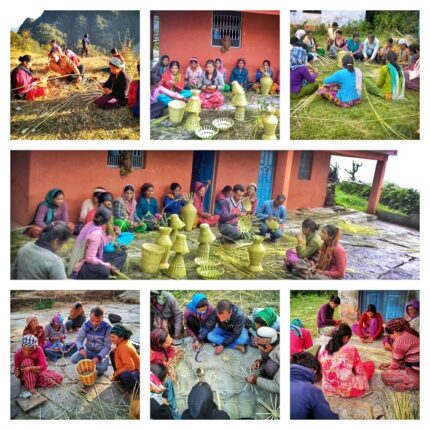
Ringaal Craft Gets GI Tag –
Ringal or Ringaal is a plant that grows in Uttarakhand and has many uses. Ringal is a big part of the way people in Uttarakhand live their lives. Ringal is used for many things, like ink pens, different kinds of baskets for carrying and storing things, baskets for flower pots or brooms, and baskets for storing food. It would not be wrong to say that Ringal is an important part of the everyday life of the people of Uttarakhand.
#UttarakhandRingal Craft gets the #GI tag
— DPIIT India (@DPIITGoI) September 30, 2021
Ringal weaving is a nifty and age-old art. The artisans use a special species of dwarf Ringal that grows in these areas to weave. Ringal is nearly water-resistant is very popular among the villagers & tourist places in the state. pic.twitter.com/rwN1TWNmGK
But even though traditional Ringal craft can be used in many ways, it is on the verge of dying out for many reasons. Traditional crafts fell out of favor because the government didn’t care enough about them, people moved away, forest laws changed, and people looked for better ways to make money.
Geographical indication (GI) tags have been given to seven indigenous products, including Ringal, to protect them and keep their cultural significance.
These include chura oil from Kumaon, Munsiyari Rajma, Bhotiya dan, aipan (traditional art made for special occasions), ringal crafts, copper products, and thulma (blankets made from locally sourced cloth).
Now, you might be wondering how this GI tag will help Ringle Craft. To understand this, we need to know what the GI tag is and what it does.
What is GI Tag?
A Geographical Indication (GI) is a label applied to goods with a specific geographic origin and characteristics or a brand image related to that location. A label must identify the product as coming from a specific location in order to serve as a GI. Furthermore, the product’s characteristics, features, or reputation must be primarily due to its origin.
Do you know: Darjeeling Tea was the first Indian product to be labeled as a GI product.
What are the Benefits of the GI tag?
- India has laws that protect goods that have Geographical Indication Tags.
- The tag stops people from using a registered geographic indication without permission.
- It helps the manufacturers of goods made in a certain area stay in business and make money.
- It gives Indian Geographical Indications legal protection, which helps to boost the export of the product even more.
List of Uttarakhand products that have received GI Tag –
| Category | Products |
| Handicraft | Bhotia Dann |
| Art | Aipan Art |
| Agriculture | Munsyari Razma |
| Handicraft | Uttarakhand Tamta Product |
| Handicraft | Thulma Blanket |
| Agriculture | Kumaon Chyura Oil |
This short video about Ringaal artisan Laxmi Devi tells her story of defiance, independence, humility and of the belief that it is never late to learn anything new.
Important places for Ringal craft in Uttarakhand
Pithoragarh district of Uttarakhand is a right place to witness the Ringal work and meet the artisans involved in the work. It is a traditional way of livelihood for several families. They create Ringal products such as Suupa, Mohta, Dokke and several decorative products and sell them in the district markets.
One can also find Ringal weaving communities in the Nainital, Almora, and Rudraprayag districts of Uttarakhand. However, the traditional Ringal craft is now at the stage of extinction as the artisans are not able to realise the monetary benefits from Ringal products. Some other reasons for the fall of traditional crafts can be attributed to the negligence of government, migration, forest laws, and the search for better economic activities.
Future prospectus
Ringal weaving is indigenous knowledge and should be preserved and promoted. The recent GI tag for Ringal craft has given it a new life, and a new identity. It can be an economically beneficial craft as there is always a demand for artistic and traditional products in certain sections of society. From the perspective of environmental conservation, the Ringal products are extremely good and perfect replacements for plastic-based products. There is a need to promote the craft at the state level and take some cues from northeastern states who have made their products globally popular.
Where to buy Ringal Craft Online?
These Handcrafted Ringal Products are easily available in the local market of Uttarakhand districts at reasonable prices. but you don’t need to worry much because thanks to the internet many local shopkeepers are now connected with online e-commerce. These products are now easily available online.
We have included some online websites with a variety of Ringaal Products at reasonable prices. Ringal Products like – Ringal Chapra, Ringal Conical Lamp, Gift Basket, Pooja Tokri, and many other products are easily available online.
Frequently Asked Questions:
1- What is Ringal?
Ringal is a dwarf bamboo, sturdy and flexible. It is used to make basketry in Kumaun and Garhwal regions in Uttarakhand.
2- What is the Scientific name of Ringal?
Chimnobabusa falcata is Scientific name of RIngal. There are many bamboo varieties are available in the dense woods of Uttarakhand.
3- What products are made with Ringal?
Ringal Chapra(Basket), Suppa, Pooja Tokri, Conical Lamp, Flower Pot, Hot Case, and many other Traditional items made up with Ringal.
4- How many types of Ringaal are used by wavers?
There are several species of Ringal available in Uttarakhand. But only 5-6 types of Ringal are used to make Handicrafts by weavers.
- Dev Ringal
- Tham Ringal
- Sararu Ringal
- Bhatputra
5- How GI Tag will help Ringal Craft?
With the GI tagging, Ringle Craft is now labeled and protected under the laws. The GI tag now ensures the quality and originality of Ringle products. This will help in promoting the sale of products in other states and countries also.
